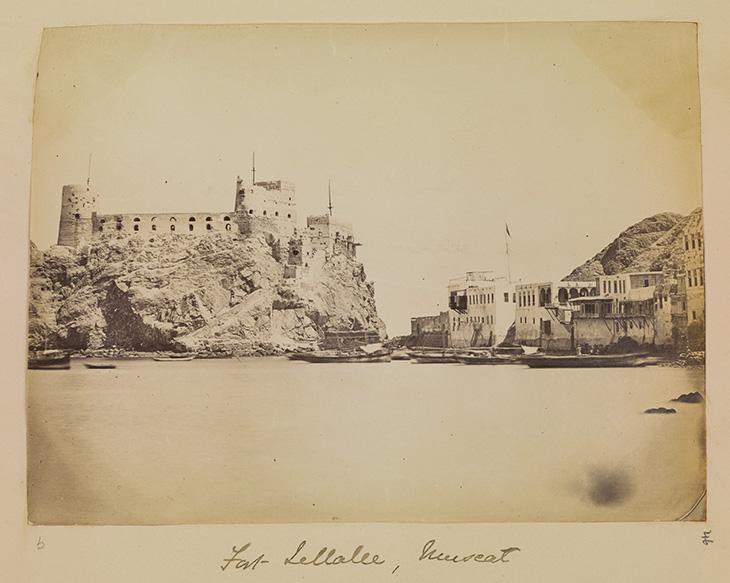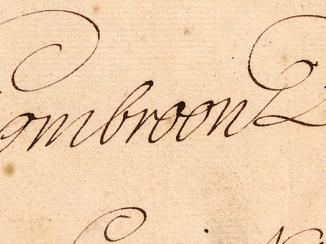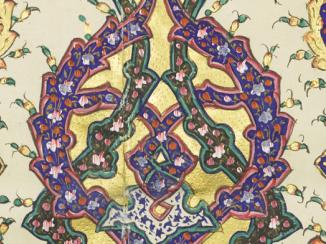Overview
What is the significance of the records?
The records of the Muscat Political Agency An office of the East India Company and, later, of the British Raj, headed by an agent. form one of the oldest Persian Gulf The historical term used to describe the body of water between the Arabian Peninsula and Iran. collections within the India Office The department of the British Government to which the Government of India reported between 1858 and 1947. The successor to the Court of Directors. Records. The records document the work of Britain’s Political Agency An office of the East India Company and, later, of the British Raj, headed by an agent. in Muscat and Oman from the date of its establishment as a British Residency An office of the East India Company and, later, of the British Raj, established in the provinces and regions considered part of, or under the influence of, British India. in Muscat in 1800, up until the mid-twentieth century. These records shed light on some of the most significant historical events that have shaped the modern day Sultanate of Oman, and offer a fascinating insight into British relations with the Sultanate over a period of 150 years.
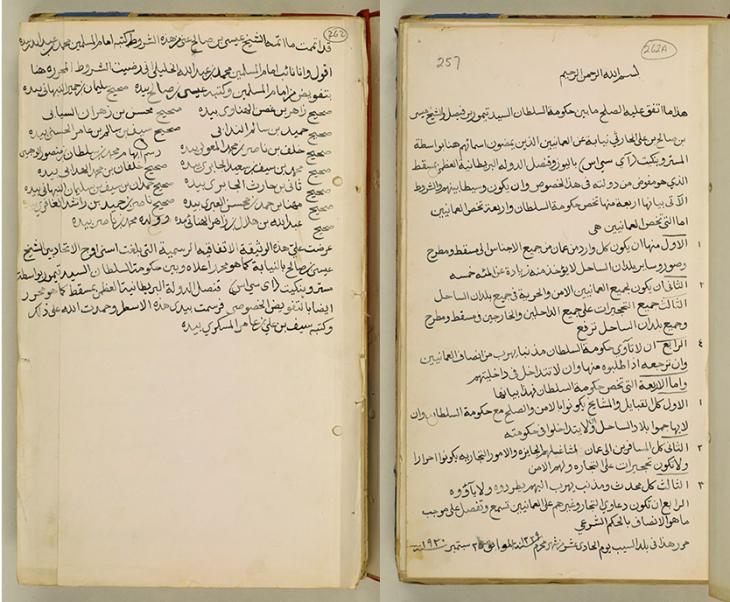
The Political Agency at Muscat: an Historical Overview
The British Government established a Residency An office of the East India Company and, later, of the British Raj, established in the provinces and regions considered part of, or under the influence of, British India. at Muscat in April 1800, following two agreements between Britain and the Sultan of Muscat, Sayyid Sultan bin Ahmed Al Bu Sa‘id (r. 1792/3-1804). The Residency An office of the East India Company and, later, of the British Raj, established in the provinces and regions considered part of, or under the influence of, British India. was primarily established to counter the growing influence of France in Muscat and Oman, and to increase that of the British Government and interests, in return for securing the Sultan’s position and defending Muscat against any internal or external challenges. The Residency An office of the East India Company and, later, of the British Raj, established in the provinces and regions considered part of, or under the influence of, British India. closed after only ten years, and for the following thirty years matters relating to Muscat became the responsibility of the British Residency An office of the East India Company and, later, of the British Raj, established in the provinces and regions considered part of, or under the influence of, British India. at Bushire.
The first Political Agency An office of the East India Company and, later, of the British Raj, headed by an agent. at Muscat opened in January 1840. This was prompted by British concerns over the activities of the Wahhabis and Muhammad Ali Pasha An Ottoman title used after the names of certain provincial governors, high-ranking officials and military commanders. of Egypt in the Hijaz region. Captain Atkins Hamerton, the first Political Agent A mid-ranking political representative (equivalent to a Consul) from the diplomatic corps of the Government of India or one of its subordinate provincial governments, in charge of a Political Agency. at Muscat, took up the role in May 1840, and was soon elevated to the rank of Consul. Hence, a considerable amount of the Agency’s records were generated by the British Consul and Agent, Muscat.
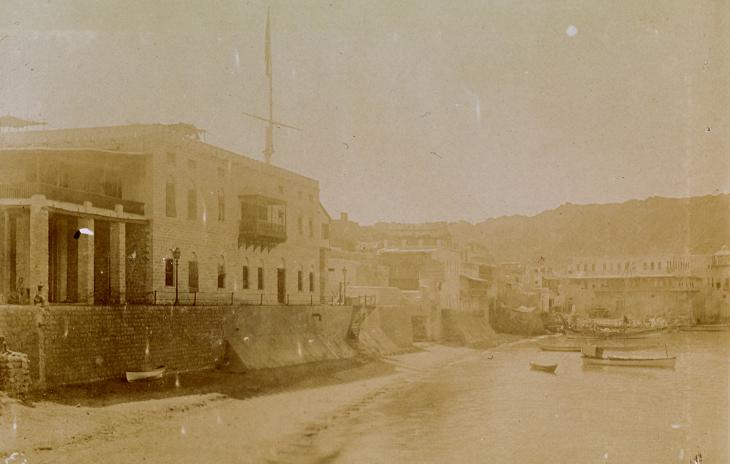
The location of the Political Agency’s office shifted from time to time, in response to the Sultan of Muscat and Oman occasionally transferring his court to other territories such as Zanzibar and Dhofar, whenever he felt the need to do so. The Political Agency An office of the East India Company and, later, of the British Raj, headed by an agent. would move with the Sultan, while an Assistant Agent would remain behind at Muscat. During the many decades of its work, the Agency An office of the East India Company and, later, of the British Raj, headed by an agent. witnessed the detachment and attachment of a number of the territories under the Sultan’s control, including Gwadar in what is now Pakistan and Zanzibar in East Africa. This explains the presence of many records about these regions in the files of the Muscat Political Agency An office of the East India Company and, later, of the British Raj, headed by an agent. .
Before the 1920s, the Agency’s work was mainly focused on the internal affairs of the Sultanate, as well as the British Government’s relations with the Sultan. From the 1920s to the late 1940s, the Agency’s work also began to focus increasingly on the economic affairs of the Sultanate. The British Government appointed Bertram Sidney Thomas, the first British explorer of the Empty Quarter (Rub’ al-Khali), as Financial Advisor to the Sultan from 1925 to 1932. After the partition of British India, responsibility for the Political Agency An office of the East India Company and, later, of the British Raj, headed by an agent. was transferred to the Foreign Office in 1948, though some of the records in the files date from as late as the 1950s.
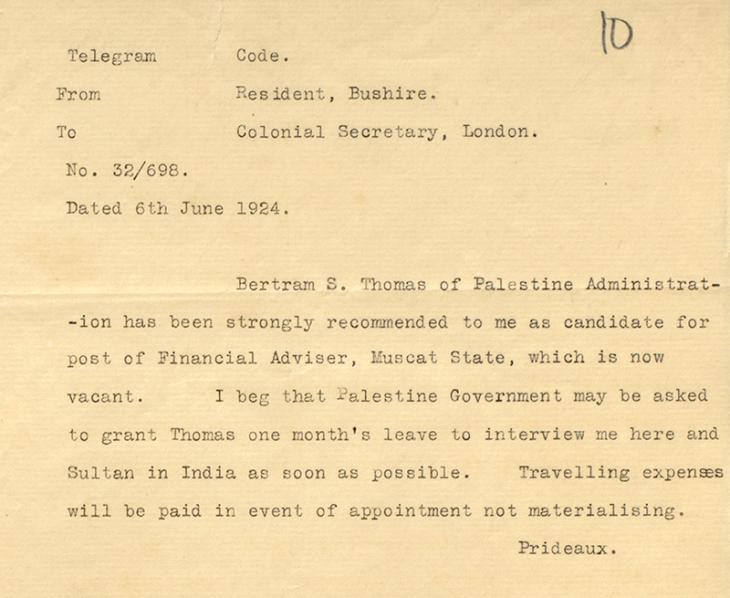
What types of records can be found in the series?
The main subject headings in the Muscat Political Agency An office of the East India Company and, later, of the British Raj, headed by an agent. files include: ‘Muscat State Internal Affairs’, ‘Foreign Interests’, ‘Political Affairs’, ‘Arms Traffic’, ‘The Slave Trade’, ‘Trade and Commerce’, ‘Aviation’, ‘Honours and Awards’, ‘Government Property’, ‘Medical and Public Health’, ‘Meteorological’, ‘Agriculture’, and ‘War’. The bureaucratic nature of communications between the Agency An office of the East India Company and, later, of the British Raj, headed by an agent. , the Residency An office of the East India Company and, later, of the British Raj, established in the provinces and regions considered part of, or under the influence of, British India. , and the Government of India has resulted in a noticeable duplication in the records, particularly in the earlier parts of the collection.
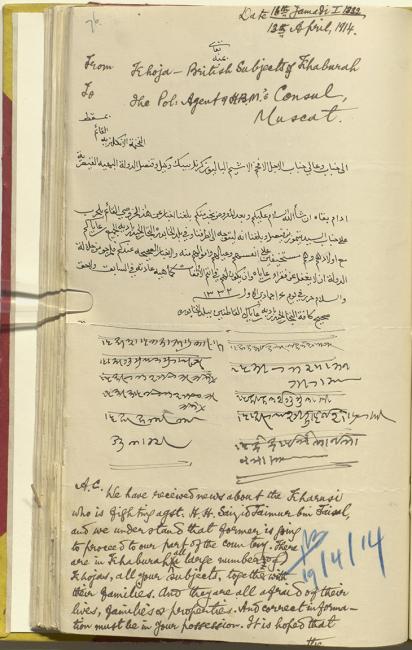
Some of the Muscat Political Agency An office of the East India Company and, later, of the British Raj, headed by an agent. records are in Arabic. These include the correspondence exchanged between the Sultans of Muscat and Oman (the Al Bu Sa‘id family), the Imams of Oman, notable Shaikhs and Omani tribal leaders, as well as a number of governmental institutions, including the Council of Ministers. Beside Arabic and English, there are other materials such as petitions and personal letters that appear in other languages in the records including Gujarati, Sindhi, and Persian. The records also include photographs, maps, and various types of surveys carried out in the Sultanate and its territories.
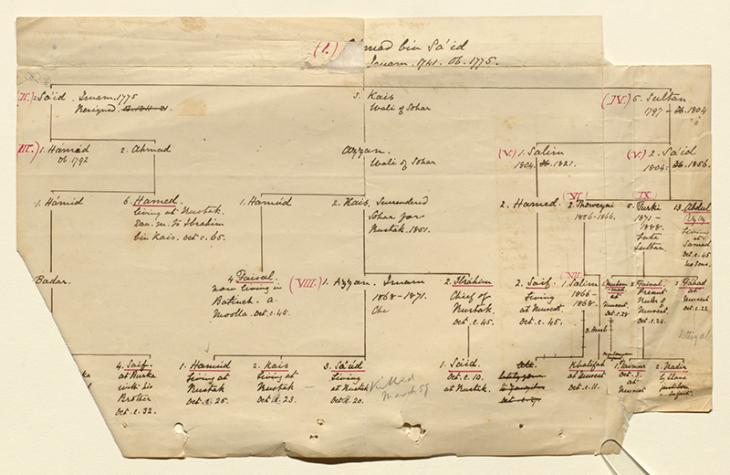
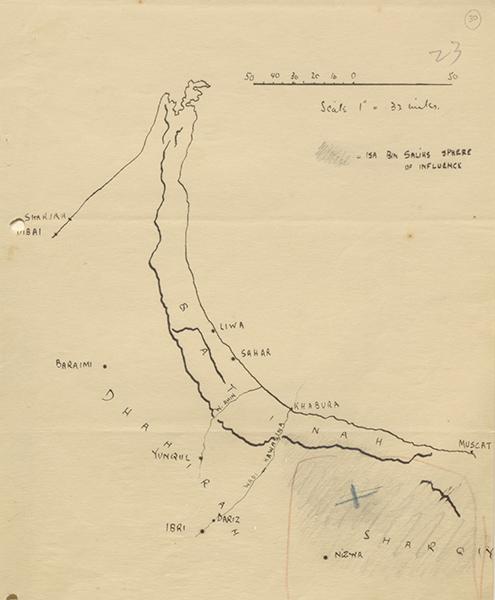
The Arrangement of the Records
The Muscat Political Agency An office of the East India Company and, later, of the British Raj, headed by an agent. records contain 540 files and volumes divided over five sub series:
- Muscat Agency An office of the East India Company and, later, of the British Raj, headed by an agent. , General Correspondence 1828-1898 (IOR/R/15/6/1-21): 21 individual files and volumes.
- Muscat Agency An office of the East India Company and, later, of the British Raj, headed by an agent. , Subject Files 1869-1933 (IOR/R/15/6/22-69): 47 files and volumes divided into 16 subjects.
- Muscat Agency An office of the East India Company and, later, of the British Raj, headed by an agent. , Subject Files c. 1900-1951 (IOR/R/15/6/70-472): 402 files divided into 23 subjects.
- Muscat Agency An office of the East India Company and, later, of the British Raj, headed by an agent. , Official Publications 1873-1940 (IOR/R/15/6/473-541): 68 individual files and volumes of Persian Gulf The historical term used to describe the body of water between the Arabian Peninsula and Iran. Administrative Reports, apart from the last file (IOR/R/15/6/541), which is marked as General Staff India, Confidential 1915.
- Muscat Agency An office of the East India Company and, later, of the British Raj, headed by an agent. , Additional Subject Files 1948 (IOR/R/15/6/542-543): 2 individual files.
Gaps in the Records
Gaps in the records are more likely to be the result of an unselective policy rather than a consciously selective one. The arrangement of the surviving records clearly involved some degree of approximation. The main records that have not survived are the Political Agent’s Court records which cover the period between 1867 and 1948. It is unclear how these records disappeared, but any gaps in the reference sequences usually indicate that the materials have either been lost or destroyed.
